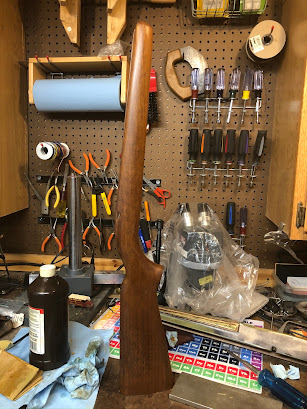Right away, I liked it. The action is very smooth, and the trigger lives up to its reputation. I took it out to a Department of Natural Resources range and put a few boxes of CCI Standard Velocity through it. It performed beautifully and was a lot of fun to shoot, even with the tiny stock. I did discover that that peep sight did not work well for someone with a large adult sized head- at least, not my head. I ordered the Savage factory scope mounting blocks, but those greatly restrict scope positioning, and didn’t work with any of the scopes in my collection, so that was replaced with an EGW Picatinny rail. After trying a few older scopes I had, I settled on the old Redfield 2-7x scope seen in the photo above.
That still left the matter of the stock. Surprisingly (to me, at least), no one makes a pack rifle style stock for the Rascal, though you can find such stocks for the Crickett and others. That meant I’d have to make my own, and in the meantime I’d need to extend the stock to make it more comfortable to shoot. I found a Canadian eBay vendor who makes a modular 3D printed adapter and extension available in two lengths, and ordered that. It works well, but the rough 3D printed surface bothered me, so I sanded it down, leaving a light colored surface that flashes with the black stock.
I’m either going to paint over this with something like Plasti-Dip or perhaps buy an inexpensive black nylon cheek and butt pad to cover it up. Watch this space.







